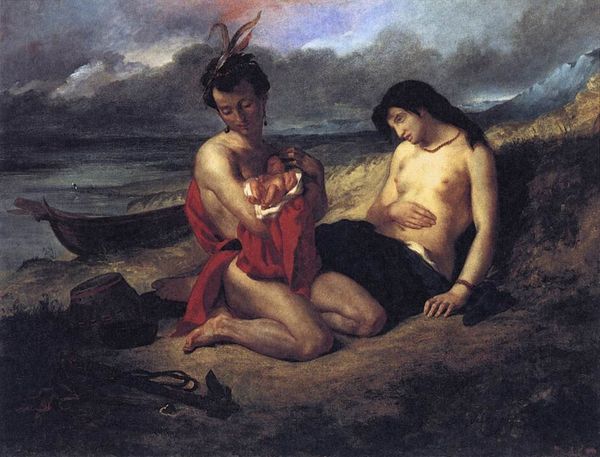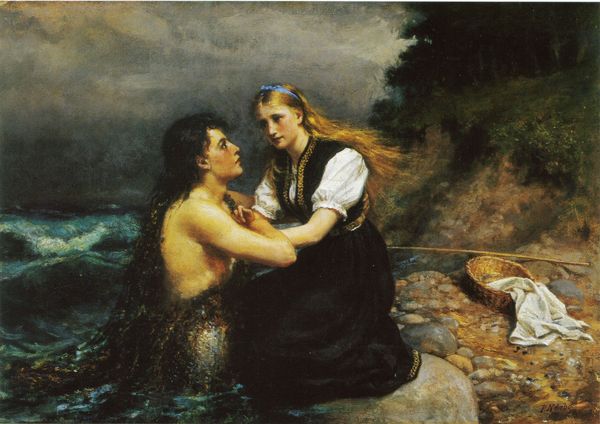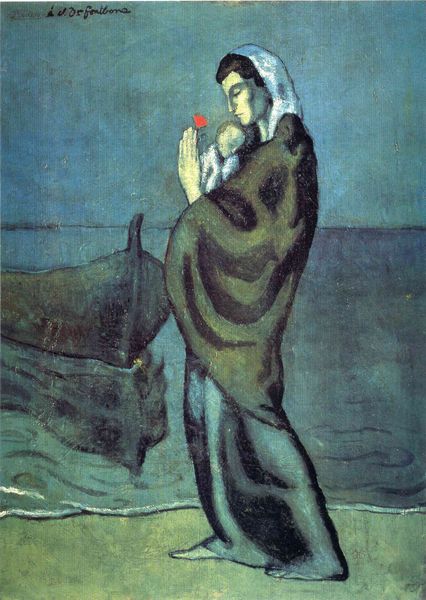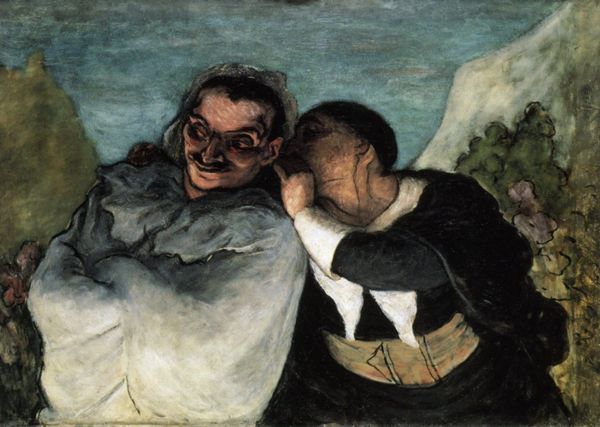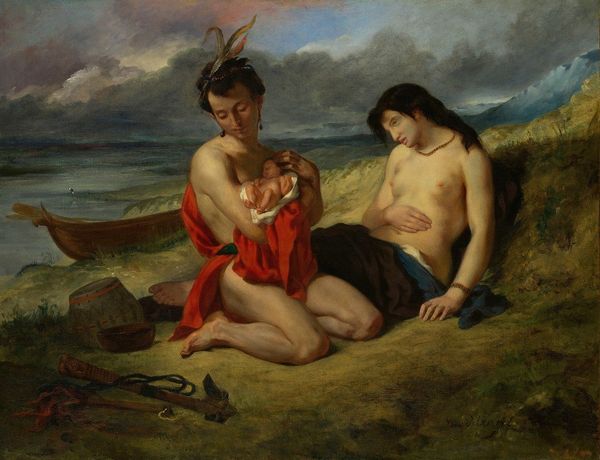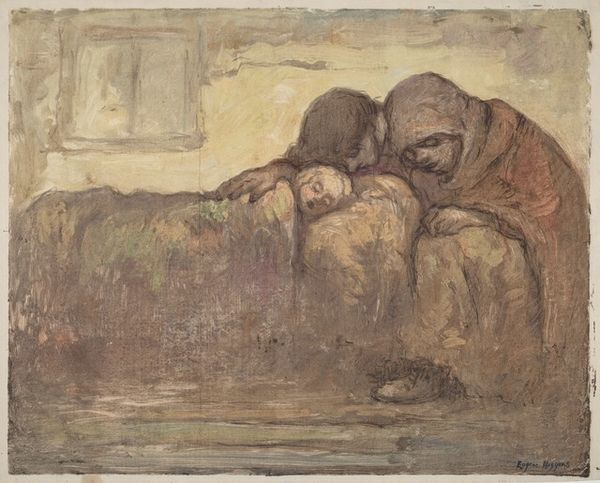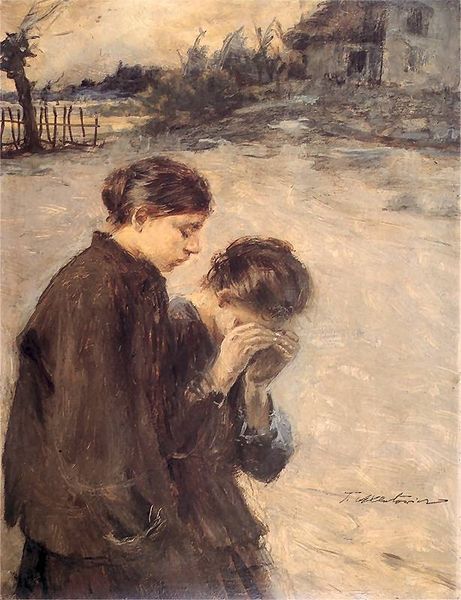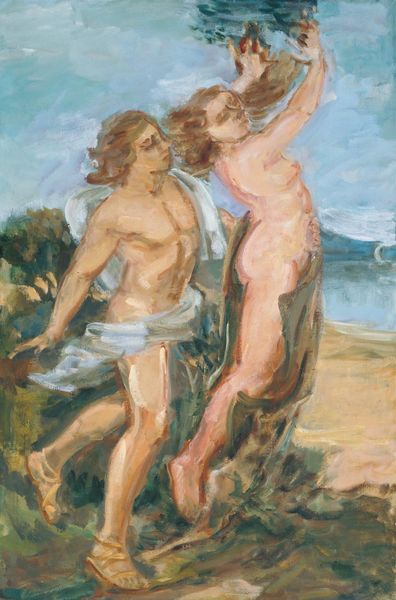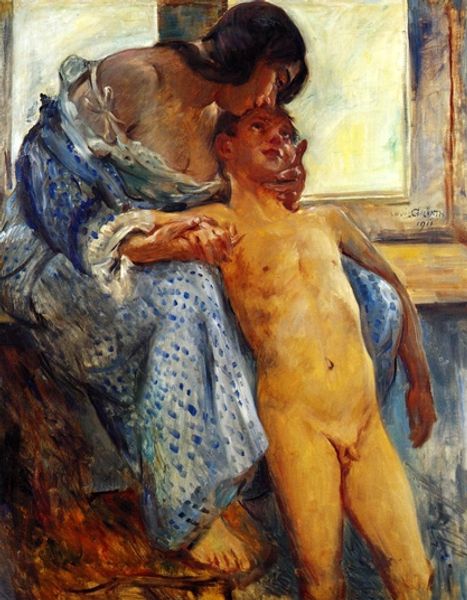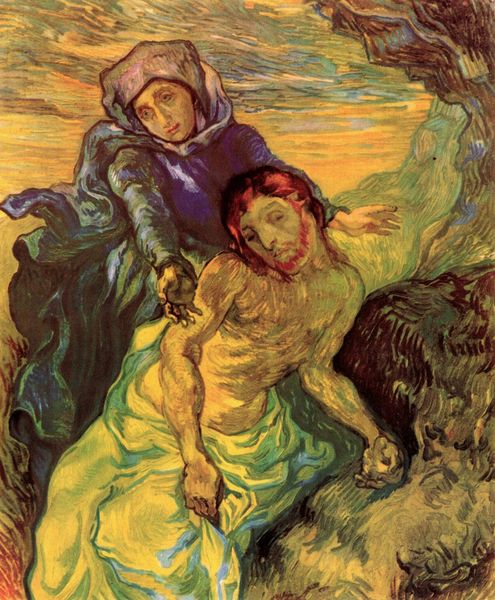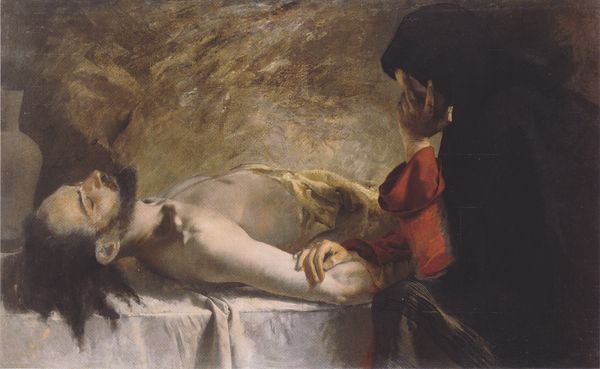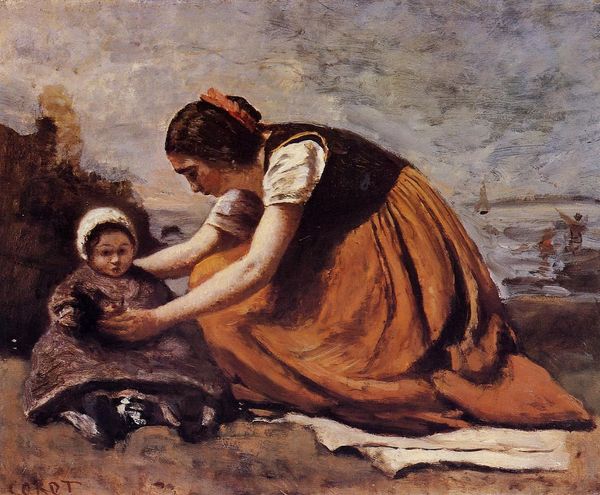
Copyright: Public domain
Curator: Ferdinand Hodler’s 1885 oil painting, "The Good Samaritan," offers a powerful interpretation of the biblical parable, currently residing here at the Kunsthaus Zürich. What are your initial thoughts on the work? Editor: The roughness of the brushstrokes and the earthy palette create a sense of immediacy and rawness. The figures are so grounded, so much about the tangible weight of the labor involved in tending to the injured man. It doesn't romanticize compassion. Curator: Indeed. Hodler positions the parable within a distinctly Realist framework. This was painted at a time of increasing social awareness, and Hodler's work frequently engages with the realities of everyday life, giving monumental status to what were typically considered ordinary scenes. How does that materiality, as you’ve described it, affect the scene itself? Editor: Well, consider the clothing; the fabrics, depicted so plainly, almost seem worn with the labor of a working-class existence. There is the implication of class differences, a subversion that casts the marginalized as saviors. Hodler’s technique, laying the paint so thickly, actually gives substance to the Samaritan's empathy. He doesn’t shy from showing a working man ministering, truly present. Curator: It is interesting you say "subversion" since Hodler had some official support in his lifetime and produced works intended for the public sphere, yet at other times, the establishment rejected his radical sentiments. Consider the implications of choosing this particular parable at this point in history. The figure of the "good" Samaritan challenges contemporary moral codes, the definition of ‘goodness’ at the time. The way the man looks upwards is very striking to me too. Editor: It’s as if he’s looking for divine understanding. The textures of suffering and the roughness of aid given have real weight. It makes the compassion offered, which may have some potential value. And it's that groundedness that makes the image linger. It prompts you to ask: who gets to be “good?” and by what standards? Curator: Precisely, Hodler leaves us contemplating these critical questions, skillfully using a classical story to engage with modern social complexities and to force his audience to reconsider their own moral compasses, too. Editor: And thinking about who provides and the weight of doing so! Something as deceptively simple, which offers such complicated considerations to everyone encountering it.
Comments
No comments
Be the first to comment and join the conversation on the ultimate creative platform.
